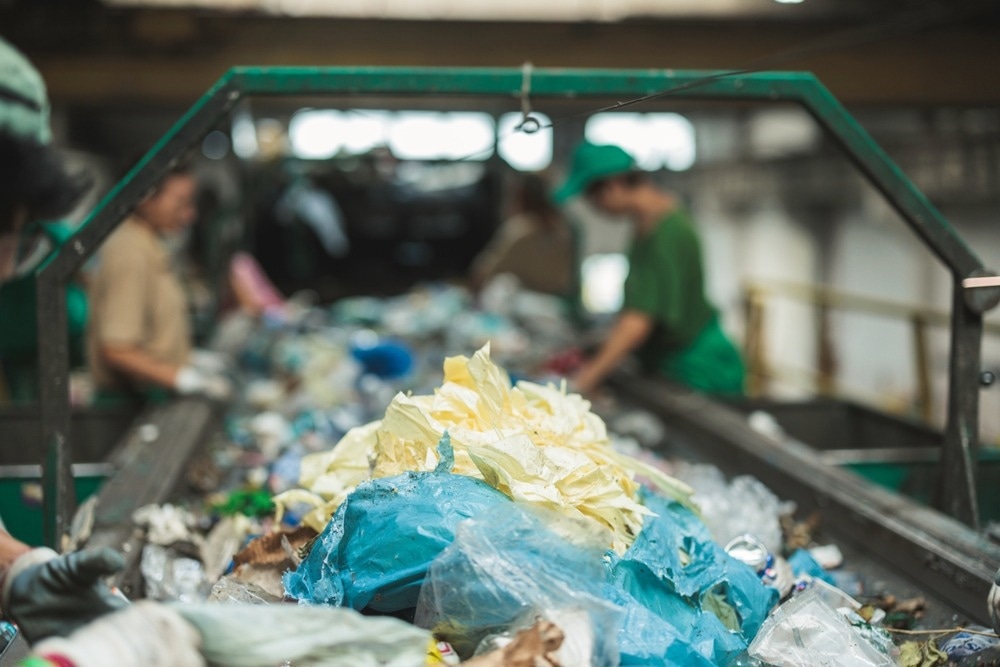Reviewed by Danielle Ellis, B.Sc.Sep 2 2024
A study led by Tokyo Metropolitan University professor Kotohiro Nomura and published in Industrial Chemistry and Materials describes how to depolymerize PET (polyethylene terephthalate) using alcohols and an easily accessible, low-cost iron trichloride catalyst.

Image Credit: MAD.vertise/Shutterstock.com
This technology can be used for the selective chemical recycling of textile and plastic waste mixtures.
Plastic waste is a major environmental concern that demands immediate response. However, the rate of plastic reuse (material recycling) is still low, particularly in the case of chemical recycling into raw materials, also known as chemical recycling.
Polyesters, which are composed of repeating “ester bonds” generated by the interaction of carboxylic acid with alcohol, are widely utilized in plastic bottles and garments.
Polyester can be reduced to its component parts entirely if these ester bonds could be broken. However, conventional procedures require high temperatures together with significant quantities of basic or acidic chemicals. As a result, a straightforward, economical, and ecologically friendly approach is widely desired.
Furthermore, there is a need worldwide for the development of selective polyester depolymerization from plastic waste, particularly from waste textiles, which are polyester and cotton mixtures.
Using ethanol and either FeCl3 or FeBr3, the research team has now created a technique for depolymerizing PET bottles without the use of acids or bases. This process produces diethyl terephthalate (DET) and ethylene glycol (EG) with a high degree of selectivity (98–99%).
The commonly accessible and reasonably priced iron trichloride (FeCl3) showed better catalytic performance at 160–180 ºC, which is similar to their earlier findings with titanium catalysts.
Notably, this process made it possible to depolymerize PET exclusively and selectively from textile waste—which includes both PET and a blend of PET and cotton—producing DET and EG while recovering cotton waste quantitatively. Additionally, the catalyst made it easier for PET to depolymerize from waste plastic, including polyethylene, selectively.
The invention of a simple process for the exclusive and selective depolymerization of PET is particularly significant for the chemical recycling of textile waste. This process of chemically recovering PET from plastic trash is a viable alternative for creating a circular economy.
This research was funded by the JST CREST program (Grant Number JPMJCR21L5), under the Research Area “Precise Material Science for Degradation and Stability,” and the Research Theme “Development of Bio-Based Advanced Polymers and their Depolymerization, Chemical Recycle.”
Journal Reference:
Awang, N. W. B., et. al. (2024) Depolymerization of PET with ethanol by homogeneous iron catalysts applied for exclusive chemical recycling of cloth waste. Industrial Chemistry and Materials. doi.org/10.1039/D4IM00081A